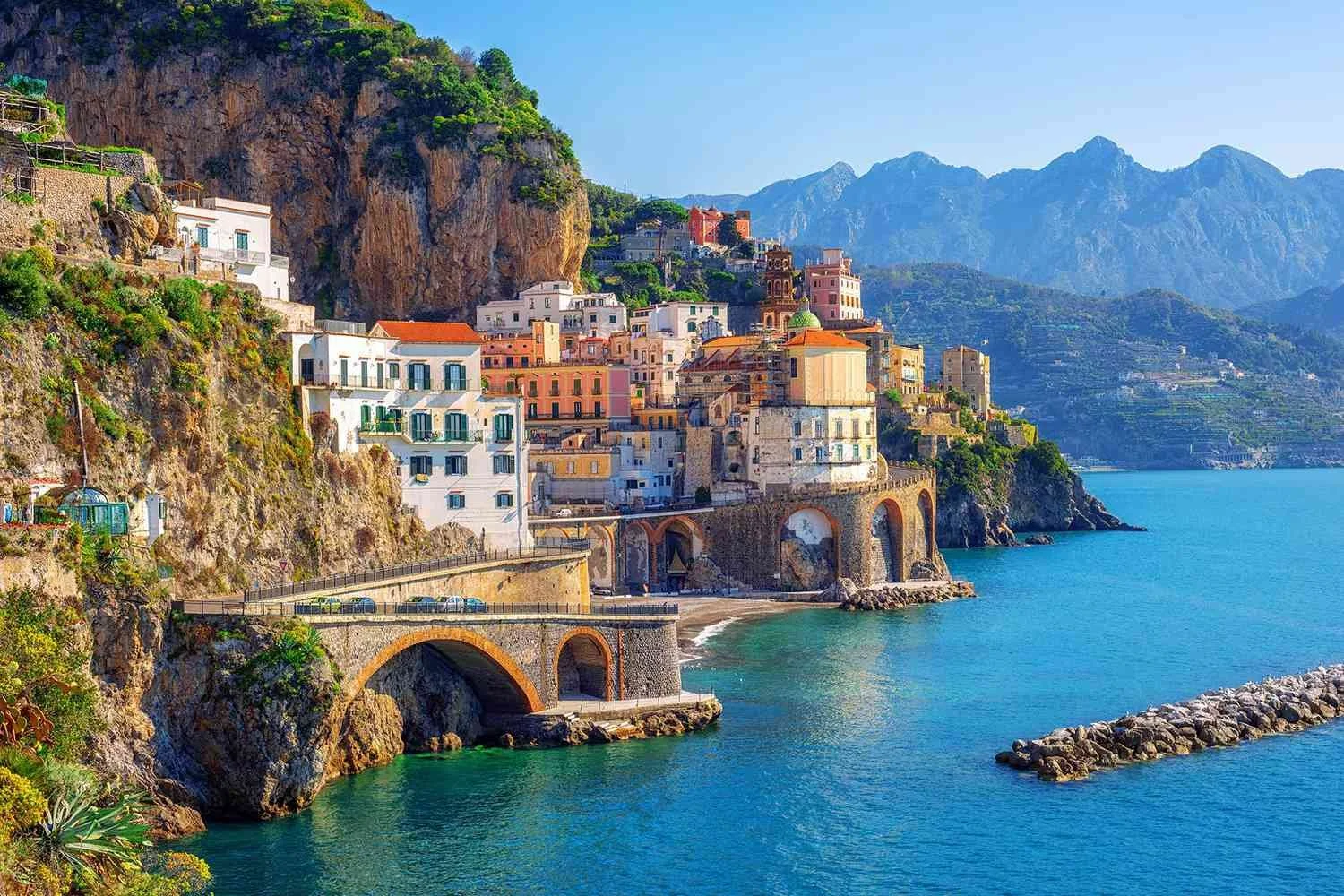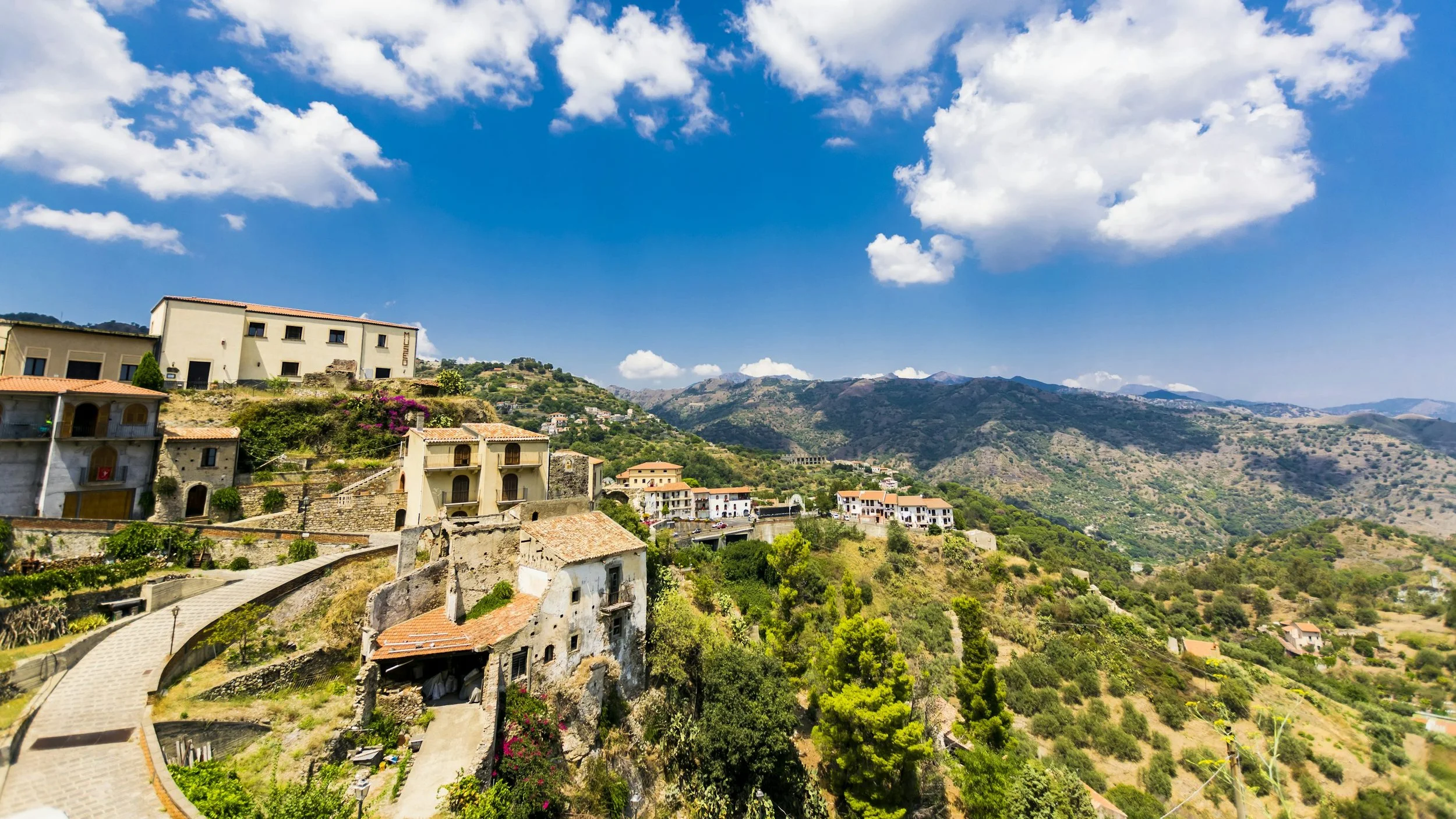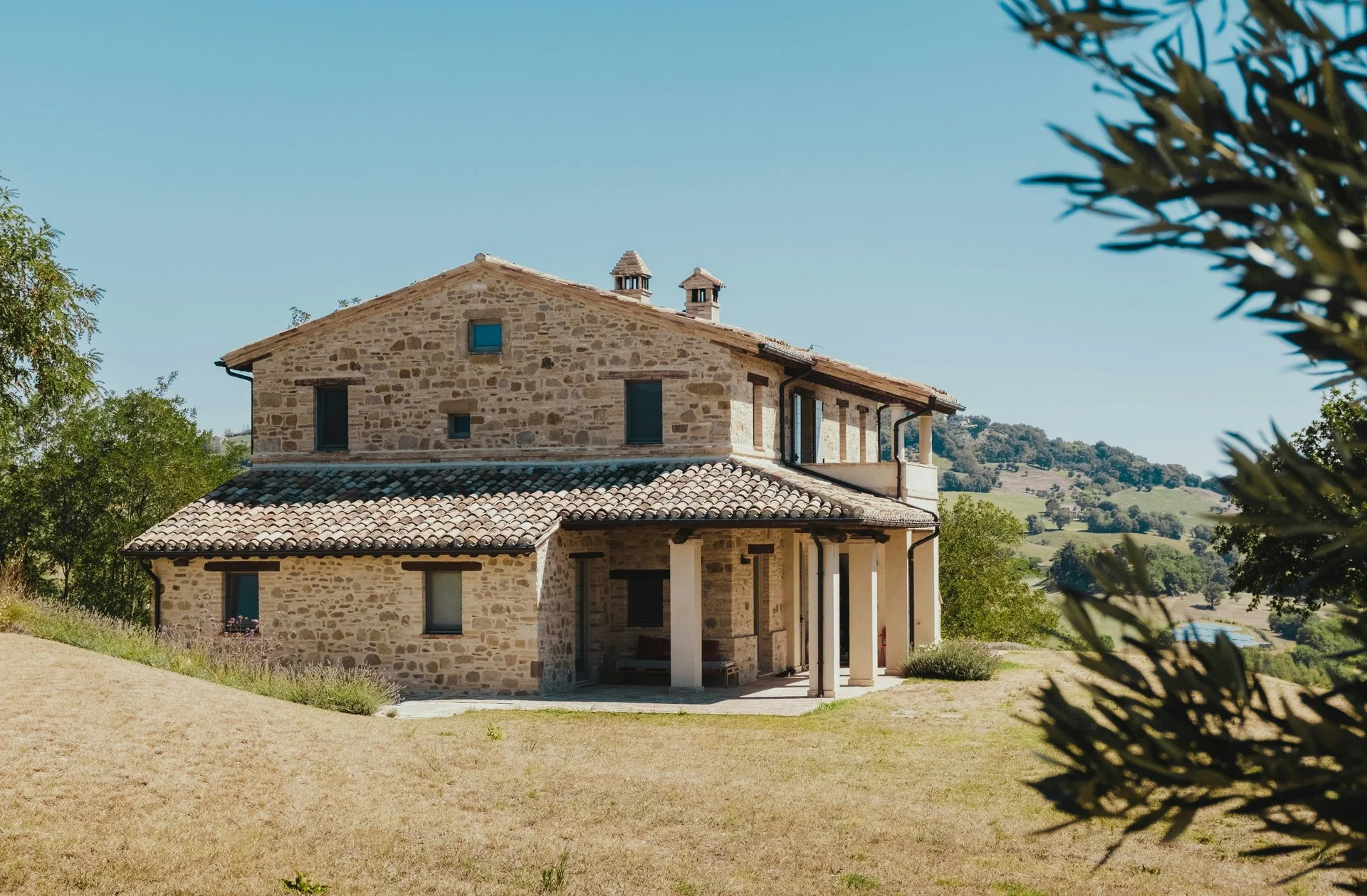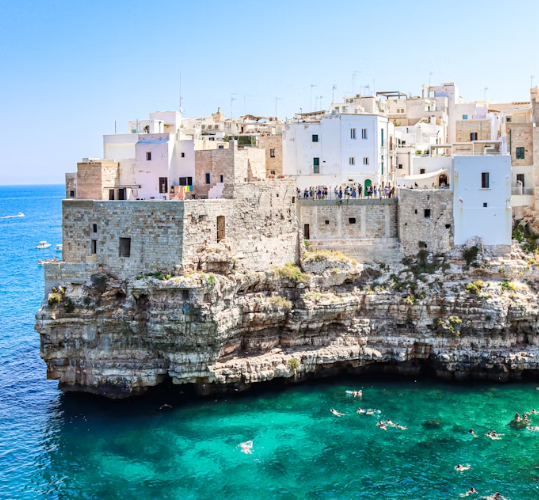15 Best Places to Retire in Italy for Americans (Under $2K/Month)
The Amalfi Coast in Italy.
Dreaming of retiring in Italy without draining your savings? This article lists 15 best places to retire where retiring in Italy for under $2,000 monthly is possible. We’ll cover the cost of living, visa requirements, and how to live in Italy like a local.
From Tuscan hills to Sicilian coastline, each retirement destination balances charm and a relaxed pace of life for savvy expats. Ready to pick your perfect spot and plan your move? Let’s go!
Why Consider Retiring in Italy on a Budget?
Dreaming of retiring in Italy on a tight budget? You’re in luck! The overall cost of living here is about 40% cheaper than in the US.
You can live on roughly $1,941 per month. A cappuccino and cornetto cost $2.50. Dinner for two with local wine is about $30. Plus, high-speed internet runs $35 a month.
Safety is top-notch. Italy scores 1.643 on the Global Peace Index. That makes it one of Europe’s safest spots for retirees. Once you get a residence permit, you can tap into the national healthcare system. That offers world-class care at low fees.
You’ll also love the relaxed pace of life in small towns. Regions like Tuscany and Sicily blend stunning landscapes with friendly communities.
The Mediterranean climate means mild winters and warm summers. Many expats say they feel at home fast. Plus, you can apply for an elective residency visa with proof of steady income.
With lower costs, great services, and true Italian charm, retiring in Italy on a budget is more than possible. Why wait? Start planning your dream retirement abroad today.
Understanding the Financials: Visa and Cost of Living in Italy
Money is key when moving to Italy. You’ll need a visa and a clear budget for rent, food, and daily bills.
The Elective Residency Visa for US Citizens
The elective residency visa is a top pathway for US citizens looking to live in Italy as retirees without work. You must prove that you have a cost of living.
This cost should also be offset by passive income of at least €31,000 (about $34,000) from pensions, Social Security, or investments. The Italian Ministry of Foreign Affairs provides detailed application guidelines and requirements.
Show your lease or property deed. You’ll also need private health insurance until you join the national healthcare system. Processing takes several months. So, try to plan early to secure your Italian residency.
What is the Real Cost of Living for an American Retiree?
Trully, Alberobello, Italy.
On average, retiring in Italy costs just under $2,000 per month. But adopting local habits in small towns cuts that in half.
Shop at markets, ride buses, and eat seasonal produce to save big. Rent starts at $470 monthly. If you buy a place to retire, rural homes begin at $30,000.
Utilities are a breeze. Mobile plans run about $20. High-speed internet is $35 a month. Month-long transit passes cost under $40. Food budgets depend on you and your shopping habits. Local markets offer fresh veggies, fruits, and cheeses at wallet-friendly prices.
For expats and US citizens, understanding residency and elective residency visa rules is key. Factor in Italy’s healthcare system fees, too. With smart choices, the cost of living in Italy turns your dream retirement into reality.
This retirement destination also appeals to history buffs and sun lovers.
The 15 Best Places to Retire in Italy for Under $2,000 a Month
Imagine swapping your daily grind for sunlit cobblestone streets. Here are 15 Italian spots where you can retire for under $2,000 a month.
1. Basilicata: The Top Place to Retire for Affordability
Basilicata, an ancient region in Southern Italy.
Basilicata is one of the best places to retire in Italy. It claims top spot for affordability, with monthly budgets of $1,300–$1,600. This hidden gem features dramatic mountain landscapes, the UNESCO-listed Matera, and Ionian coastline beaches.
Hill-town houses start at $30,365, so homeownership is within reach for many retirees. The region’s strong community vibe. It also offers southern hospitality, making it a favorite among expats.
Local festivals, traditional cuisine, and centuries-old customs create a true immersion in Italian culture.
Travel is easy: Bari and Naples airports are within two hours. Regional transport links towns, though a car can help you explore hilltop villages. Small towns here make it easy to meet friends and savor a slow pace.
Non-EU citizens can get a visa and a residency permit. However, review the pros and cons of health insurance and the cost of living.
Basilicata, an ancient region in Southern Italy.
2. Sicily: A Diverse Mediterranean Option for Retirees
Sicily is one of the best places to retire in Italy, with a cost of living between $1,400 and $1,800 monthly. The island’s 1-euro home programs let retirees invest in a fixer-upper. You also get to customize your own space.
Here, you’ll find sun-kissed coastline and snow-topped Mount Etna for winter thrills. It also offers layers of history and culture from Greek temples to Norman castles. English pops up in tourist zones, helping expats settle easily.
Two international airports—Catania (CTA) and Palermo (PMO)—keep US citizens and Europeans connected. Some ferries link Sicily to the peninsula and beyond.
Whether you crave beach days, mountain hikes, or countryside landscapes, Sicily offers varied scenery and a high quality of life. For visa and residency, check local rules and health insurance options.
3. Abruzzo: A Retirement in Italy Surrounded by Nature
Abruzzo is a top pick for retiring in Italy on a budget. The monthly cost of living here runs $1,400–$1,700. Plus, a three-bedroom city apartment rents for about $753.
This is one of the places to retire in Italy. It has three national parks, plus ski slopes and a sandy beach within 30 minutes.
Hiking the Apennines or exploring charming fishing villages feels like living a nature lover’s dream. Wildlife, from brown bears to wolves, roams protected areas, and small towns blend tradition with modern amenities.
For expats and any retiree, an easy visa and solid healthcare system access add peace of mind. Abruzzo offers a high quality of life without the high price tag.
4. Puglia (Apulia): Your Ideal Home in Italy's Heel
Puglia offers a cost of living of $1,500–$1,800 per month. Rentals cost 84% less than in New York City. Unique trulli houses in Alberobello start around $150,000. In contrast, farmhouses (masserie) can be under $200,000.
Lecce shines with Baroque architectural beauty, which is why some call it the “Florence of the South.” The region’s coastline spans both the Adriatic Sea, from sandy beach stretches to rocky cliffs.
Airports in Bari and Brindisi link to Europe. Trains and buses connect small towns.
Puglia’s food scene features olive oil, orecchiette pasta, and Primitivo wine. For expats retiring in Italy, Puglia is a top option for retirees. It also has a healthy residency path and a great healthcare system.
5. Northern Lazio (Viterbo Province): Live in Italy, Close to Rome
Houses on a hilly place in Northern Lazio.
Northern Lazio sits north of Rome and fits a retiree’s cost-of-living budget at $1,500–$1,800 per month. Village homes start around $35,000. Rentals can be found from $470 a month, which is ideal for expats retiring in Italy.
You’ll soak in natural hot springs and gaze on Lake Bolsena, Italy’s largest volcanic lake. Medieval Viterbo boasts papal history and culture. At the same time, small towns offer a high quality of life among places to retire in Italy.
With Rome Fiumicino (FCO) an hour away and regular trains to the capital, you get easy city access. Check your visa, secure residency, and explore local health insurance options. Northern Lazio truly is a place to retire close to it all.
6. Molise: An Ultra-Quiet and Cheap Place to Retire
Molise ranks among Italy’s cheapest regions for retiring in Italy. It also has a cost of living of about $1,300–$1,600 monthly. Village homes often go for under $32,000, and one-euro schemes invite renovation buffs.
As Italy’s smallest region, it blends Apennine foothills with an Adriatic Mediterranean coastline. Its small towns preserve centuries-old traditions. Festivals honor local saints and seasons.
It also offers artisanal crafts while keeping history and culture alive through ceramics and textiles.
7. Calabria: An Underrated Beach Retirement
Calabria is one of the best places to retire in Italy. Here, retiring in Italy feels easy with a cost of living of $1,300–$1,700 per month. Seaside towns like Scalea sell two-bedroom condos for about $100,000.
You’ll love the long coastline with sandy beaches, cliffs, and clear waters. Plus, you also get to enjoy cooler mountain trails for hiking. Lamezia Terme airport flies to the US seasonally and Europe year-round. In comparison, ferries link you to Sicily and beyond.
Local food blends Greek, Albanian, and Italian tastes. This includes spicy 'nduja and fresh swordfish. This hidden gem makes expats smile.
8. Le Marche: The "New Tuscany" for Expats
A property in a quiet neighborhood in San Severino Marche, Macerata.
A property in a quiet neighborhood in San Severino Marche, Macerata.
Le Marche offers Tuscany’s beauty without tourist crowds. You can stay in its rural hill town for $1,600–$1,900 per month. A two-bedroom apartment in Osimo’s center is $95,000; rentals run $550–$700 monthly.
Rolling hills, vineyards, and medieval towns rival Tuscany’s vistas while keeping true Italian charm. Its Adriatic coastline mixes sandy beaches and dramatic clifftop views.
Inland, you can hike, cycle, or sample Verdicchio and Rosso Conero at local wineries. Traditional festivals and a strong healthcare system add to its appeal. This Mediterranean gem ranks among the best places to retire.
It’s perfect for retirees and expats seeking lower-cost living and retiring in Italy.
9. Umbria: A Green Heartland for a Peaceful Retirement
Umbria earns its nickname as the “green heart of Italy” thanks to lush hills and medieval gems. Monthly costs range from $1,500–$1,800. In contrast, stone farmhouses need light fixes at $80,000–$150,000.
Towns like Assisi, Perugia, and Spoleto shine with history and culture. Life here moves slowly, away from mass tourism. Rome is 1.5 hours by car or train, so you can tap into city amenities when you need them.
Regional airports link you across Europe. Umbrian tables celebrate truffles, wild boar, and wines. This peaceful landscape is one of the best places to retire in Italy. It’s also a great option for retirees seeking a high quality of life.
10. Tuscany: Finding an Affordable Home in Italy's Famous Region
Even Tuscany offers some affordable choices for retirees. You can find monthly budgets of $1,600–$1,900 in rural southwestern areas. In contrast, some village homes start from $65,000.
You can get better offers by skipping pricey Florence and the coastline. Go for homes in places like Pitigliano and Sorano. These areas keep the low prices and local charm.
This region’s landscape is dotted with Renaissance art and thermal springs. It also has small towns that host seasonal festivals, showcasing Tuscany’s rich history and culture.
With exceptional wines, olive oils, and rustic cooking, Italy offers a high quality of life. You can shop for fresh ingredients at local markets and cook restaurant-quality meals at home.
11. Lazio (Castelli Romani): Hill Towns with Roman Access
A view of Lazio.
Monthly living costs in the Castelli Romani run at $1,600–$1,900. Plus, the Rome area is 44% cheaper than New York City. Rentals in small towns like Frascati, Nemi, and Grottaferrata go for $600–$900 a month.
These Alban Hills towns blend history and culture, papal landmarks, and cool summer breezes. A 45-minute train ride brings tourists and US citizens to central Rome.
You can find a housing option for retirees with top-notch restaurants, family-owned wineries, and scenic trails. With wine traditions dating back millennia and DOC labels like Frascati, it’s one of the best places to retire in Italy.
12. Campania (Inland): The Naples Hinterland
In inland Campania, monthly living costs run about $1,500–$1,800 in towns like Benevento and Avellino. Townhouses sell for €40,000–€60,000, making this region one of the best places to retire in Italy.
You’ll soak up Neapolitan history and culture at local festivals, markets, and family-run eateries. Naples airport is just an hour away, and trains link to Rome and beyond. Plus, you can hop to the coastline or explore ancient sites.
Are you a food lover? Then this is your spot. You get to try local foods like pasta with San Marzano tomatoes, buffalo mozzarella, and original pizza craft. It’s the perfect option for retirees seeking value and charm.
13. Sardinia (Interior): An Island Escape on a Budget
Interior Sardinia has low monthly costs ($1,400–$1,800). On the other hand, renovated homes in Oristano and Carbonia for $60,000–$90,000. It’s part of the 1-euro home program, making it one of the best places to retire.
For places to retire in Italy, it appeals to retirees seeking an authentic life. Here, you’ll find rolling hills, traditional small towns, and fewer crowds than coastal beaches.
Sardinia keeps its identity with festivals and crafts. It also offers cuisine like lamb, seafood, and cheeses. Some local wines include Cannonau and Vermentino. With warm winters and easy residency, Sardinia is a smart option for retirees.
14. Liguria (Inland Valleys): The Italian Riviera for Less
The Italian Riviera in Liguria.
Inland Liguria is a great place to retire, with monthly costs of $1,700–$1,900. It also offers two-bedroom village homes at $150,000–$200,000.
Tiny small towns like Dolceacqua sit in scenic valleys, giving Riviera coastline access without high prices. Winding trails, medieval villages, and farm-lined landscapes beg exploration.
Day trips bring you to beach resorts and seaside café stops. Easy train links connect you to Genoa and Nice airports. Liguria’s cuisine, fresh herbs, olive oil, seafood, and original pesto pair perfectly with local wines.
15. Veneto (Inland Hill Towns): Live Near Venice Affordably
In inland Veneto, monthly costs run $1,700–$1,900. However, the village homes in Asolo or Conegliano start at €70,000–€120,000. This place to retire combines landscape charm with easy access to Venice, Verona, and winter ski resorts.
Regional trains whisk you between cities, while local buses serve small villages. Veneto’s cultural scene shines through Palladian villas and medieval castles.
If you're a food lover, you'll get to savor Prosecco and Amarone. Plus, you can get fresh risotto, polenta, and seafood straight from your nearby beach market.
Quick-Glance Comparison: Top Options for Retirees in Italy
The Pros and Cons of Retiring in Italy
A cliff on the Italian coastline.
Italy offers sunny days and amazing food. But retirees face extra paperwork and language barriers.
Pros
Below are some of the key advantages of retiring in Italy:
Choosing a place to retire in Italy means a smaller monthly budget. Housing, food, and healthcare costs are far below US levels. The cost of living comparison shows consistent savings across all expense categories.
As US citizens, you’ll see real savings in every bill. Italy offers fresh Mediterranean meals, tight-knit towns, and a laid-back pace. Imagine savoring long lunches and strolling scenic landscapes.
From a sunny beach in Sicily to a snowy winter morning in Milan, daily life feels balanced and rich. History lovers and tourists get easy train hops to museums, ruins, and countryside escapes.
Cons
Despite the benefits, retiring in Italy has the following challenges:
Bureaucracy can test your plans. The visa and residency process for US citizens takes patience. You'll also have paperwork and multiple appointments that often stretch for months.
Cheap renovation projects, such as 1-euro homes in Sicily, demand time, money, and can hide costly fixes.
There's also regional cost gaps to deal with. Places like Milan stay pricey while southern beach towns shine with lower prices. Still, you’ll find bargains on your ideal place to retire.
Language hurdles pop up daily. While tourist areas speak English, you'll have to learn Italian to ease your life in any new landscape.
Conclusion
Retiring in Italy under $2,000 a month is within reach for many US citizens. For a Successful retirement, seek quieter places to retire like Sicily’s sun-soaked beaches. This offers low costs and rich culture year-round.
Frequently Asked Questions About Retiring in Italy
What is the minimum income requirement for retiring in Italy?
US citizens seeking a place to retire in Italy need about €31,000 (US$34,000) in passive income. You must provide income proof via pensions, Social Security, or investments.
How much does it cost to buy property in Italy as an American?
Village homes in Sicily and southern Italy start at $30,000. Renovated beach properties range from $60,000–$200,000 for US citizens seeking a place to retire.
Do I need to speak Italian to retire in Italy?
Fluent Italian isn’t required, but basic phrases make daily life smooth. Many US citizens choose Sicily or Milan as places in Italy to retire, as more English is spoken here than in smaller towns.
Can I access healthcare as an American retiree in Italy?
Once you establish legal residency, access to Italy's national healthcare system becomes available. Initial private health insurance is required during the visa application process.
What are the best regions for affordable retirement in Italy?
Southern regions like Basilicata, Sicily, and Molise offer the lowest costs. Central areas like Abruzzo and Umbria provide moderate pricing with excellent amenities. Avoiding major tourist destinations keeps costs manageable while maintaining quality of life.







